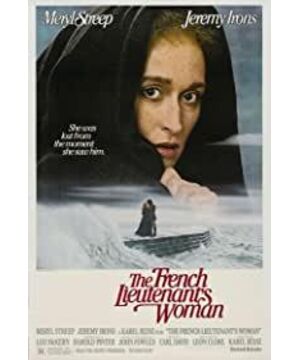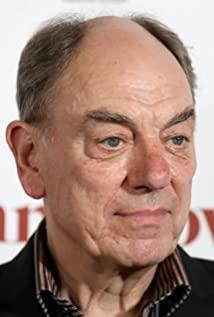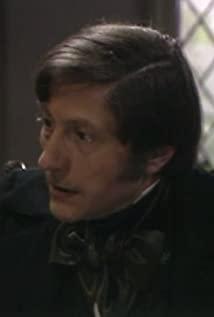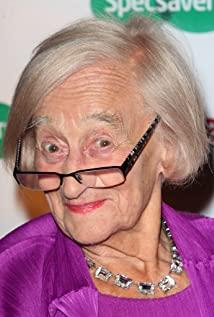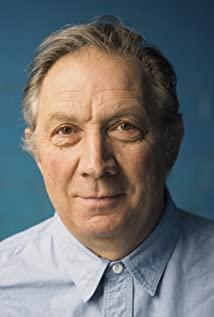● About movies
○ Adapted from the novel of the same name published in 1969 by British author John Fowles. (Inscription of the novel: Any kind of liberation is to give back the human world and human relationship to oneself. -Marx.)
○ Director: Karel Reitz
○ Screenwriter: Harold Pinter
○ Three major adaptations:
■ Removed a lot of narration in the original book
■ Changed the open ending in the original book into a relatively fixed ending, that is, the protagonists Charles and Sarah came together, "the lovers will be married"
■ In addition to the story line of the Victorian love story in the original book, another story line of love entanglement between a pair of actors and actresses in the 1980s has been added
1. Space-time staggered structure
● Plot line A: The love story of Sarah and Charles in the past (in the play)
○ Sarah and Charles split
● Plot line B: The love story of (real) Anna and Mike in the present time and space
○ Anna and Mike are one point
In the past, I met for the first time, fell in love, Sarah ran away, Charles was looking for a bond
Now cohabiting cohabiting cohabiting mike miss mike love separation
2. Narrative style - the two time and space use completely different narrative styles
● Past Time and Space: Dramatization
○ Plot pending: conflict supports plot
○ Plot layout: strict layout, "starting and turning"
○ Actors' performances: the obvious stage features of the action lines
○ Set Costumes: The set production is exquisite, and the costumes are exquisite in workmanship
● present time and space: life
○ Plot Features: Conflict fades, conflict hides
○ Plot layout: tells about the "state" of life
○ Actor performance: Action lines are all random and life-like
○ Set costumes: lifelike, often even naked
3. Audiovisual elements
● Scenes:
○ Past time and space: There are many "medium shots", "close-up shots" and "close-ups", which reflect the dramatic tendency of this time and space, that is, the creator is "what to tell you to see"
○ Present time and space: "panorama" and "medium shot" mostly reflect the non-dramatic tendency of this time and space, that is, the creator is "see what you want"
● Clip:
○ Past time and space: Sarah and Charles moved from estrangement to closeness, and the shot changed from a shorter shot to a longer shot
○ Present time and space: Anna and Mike are from close to distant, and the shot changes from a longer shot to a shorter shot
● Form of composition:
○ Past time and space: strictly follow the requirements of compositional beauty
○ Present time and space: many compositions are quite "casual"
● The composition shows the relationship between the characters:
○ Sarah and Charles changed from being unfamiliar to being close, and the composition changed from a single-person composition to a two-person composition;
○ Anna and Mike went from being close to distant, and the composition changed from two-person composition to single-person composition.
● Hue:
○ Past time and space: mainly gray and black
○ Present time and space: bright colors, splendid
● Sound:
○ Past time and space: clear voice, prominent dramatic factor. The sound is mostly the sound effects prepared in the later stage
○ Present time and space: The sound is natural and lifelike. At the same time of shooting images, the sound of the film is recorded on the spot by means of simultaneous recording.
4. Paragraph analysis
1. The beginning of the video
● Two lenses
Shot 1: Close-up - Panorama (La) Actress Anna, who plays Sarah, holds a small mirror in her hand and looks at her face. Then got up and walked to the performance area.
Shot 2: Daquan (follow, shake, rise) with a "snap", the "field board" hits the board. The "score board" was removed. Sarah, played by Anna, walks towards the camera. Sarah walks through the camera, walks up the high seawall, Sarah walks towards the vast sea at the end of the seawall
○ While accomplishing the purpose of bringing the public into the "play", he also transitioned from the present time and space to the past time and space in the camera, from the "reality" to the "play", from the absent-minded Anna in the present time and space to the passion of the past time and space Full Sara.
○ Composition: Now the symbols of time and space are gradually decreasing and disappearing
○ Sound: The real ambient sound of the current time and space gradually fades away, and "Sarah's music" plays
● "Sarah's Music"
○ In the "Past Time and Space" of the film, it often appears with the appearance of the protagonist Sarah. The music uses traditional western musical instruments (such as the violin solo, which is a musical summary of Sarah's mental state: beautiful and lonely), and the melody of the music is elegant, ethereal, and somewhat sad. It is consistent with the love theme of Sarah and Charles in "Past Time".
○ Several special appearances:
■ Mike in "present time and space" is gradually transitioning to "past time and space" Charles
■ At the end of the film, Mike shouted Sarah to the back of Anna's departure
2. "Proposal" and "Morning Sleep"
● Composition:
○ Past time and space: more of a single composition;
○ Present time and space: two people are arranged in the same composition;
● Clip:
○ Past time and space: mainly short shots
○ Present Time: Long Shot
○ The very different editing styles result in a sharp contrast between the two male and female pairs of "drama" and "non-drama" in the film
● sound
○ Past time and space: Except for the artificial sound, the entire passage has been run through music (subjective music without sound source)
○ Present time and space: It is completely the real sound of the objective environment
● Actors' movements: exaggerated and natural
● Plot features: Inheritance and transition and life fragments
3. Meet by the sea
● The core of the paragraph is how to express Sarah's charm
○ Selection of scenes: The charm of the sea is stacked with the charm of Sarah
○ The choice of weather: the weather with strong sea breeze and rippling sea (Sarah stood there calmly by herself)
○ Low-light lighting, cool-tone processing
○ Sarah's Music: Sadness
○ Camera movement:
■ 1) Transition from objective motion (moving the lens, the camera keeps moving) to subjective motion (the camera does not move, the camera lens "shakes" at first, then the camera focal length "pushes")
■ 2) Pushing the camera: As a subjective camera, it represents Charles' eyes and shows that Charles pays more and more attention to Sarah
● A pros and cons fight against each other: the mutual concern of the characters
● One stop motion (slow motion)
● The charm of an actor Streep
4. Paragraph analysis
1. Mike calls Anna: "You didn't wait for me at the hotel in Esther.
2. Anna: "Not now, not until Windermere.
4. The end of the film: a double ending in the same place
● day/night
● Reunion/Separation
● Mike in present time: "Sarah!" - A connection between two contemporary and Victorian couples
David: Did they decide how to end the film? Not sure if it was a happy ending or an unhappy ending.
Mike: We choose the first ending...I mean the second ending.
David: Which is it?
Mike: Didn't Anna tell you?
5. Mirror confusion and self-misunderstanding
● Like all films with layered structure, "The French Lieutenant's Woman" contains moments of "self-misunderstanding" and bewilderment; it realizes the constant transformation and shifting of narrative action: the A character becomes less and less able to distinguish between his true self and his role (the mirror image), between fiction and reality.
● Mike's love for Anna is for chasing Sarah's shadow that she is burdened with and for fulfilling the real possession of Sarah that he will never be able to achieve. This is a phantom love.
● After Esset, the Victorian love story and modern love story as parallel combination segments are no longer presented in the form of close/separate visual correspondence: the narrative mode of the film is switched to the on-screen/off-screen correspondence. In the Victorian story, Sarah has disappeared, and only Charles is humiliated and alone in the face of hypocritical society and heartbroken despair; in the modern story, Anna, who has no role to play, and her boyfriend David wait for the end in London. A shooting, but Mike as Charles endures Sarah's inexplicable disappearance, while dreading the eventual separation from Anna. The setting of this parallel combination method once again reveals the connotation of the psychological drama of misunderstanding and mirror-like confusion.
View more about The French Lieutenant's Woman reviews


